There are mainly two types of R.C.C. footings:
1. One way reinforced footings.
2. Two way reinforced footings.
1. One Way Reinforced Footing: These footings are for the walls. In these footings main reinforcements are in the transverse direction of wall. In longitudinal directions there will be only nominal reinforcement.
2. Two Way Reinforced Footings: For columns two way reinforced footings are provided.
The following types of the footings are common:
(i) Isolated Column Footings: If separate footings are provided for each column, it is called isolated column footing. Figure 7.3 shows a typical isolated column footing. The size of footing is based on the area required to distribute the load of the columns safely over the soil . These footings are provided over a 100 to 150 mm bed concrete. Required reinforcements and thickness of footing are found by the design engineers. Thickness may be uniform or varying.
(ii) Combined Footings: Common footings may be provided for two columns. This type of footing is necessary when a column is very close to the boundary of the property and hence there is no scope to project footing much beyond the column face. Figure 7.4 shows a typical combined footing. The footing is to be designed for transferring loads from both columns safely to the soil. The two columns may or may not be connected by a strap beam.
(iii) Continuous Footings: If a footing is common to more than two columns in a row, it is called continuous footing. This type of footing is necessary, if the columns in a row are closer or if SBC of soil is low. Figure 7.5 shows this type of footing.
(iv) Mat Footing/Raft Footing: If the load on the column is quite high (Multistorey columns) or when the SBC of soil is low, the sizes of isolated columns may work out to be to such an extent that they overlap each other. In such situation a common footing may be provided to several columns as shown in Fig. 7.6. Such footings are known as raft footings. If the beams are provided in both directions over the footing slab for connecting columns, the raft foundations may be called as grid foundation also. The added advantage of such footing is, settlement is uniform and hence unnecessary stresses are not produced.
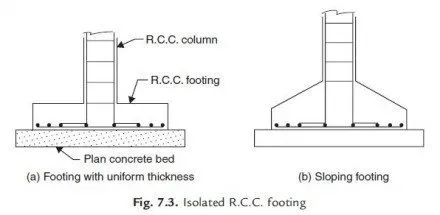
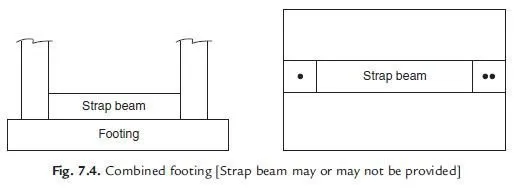
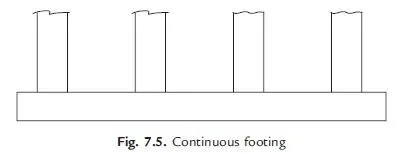
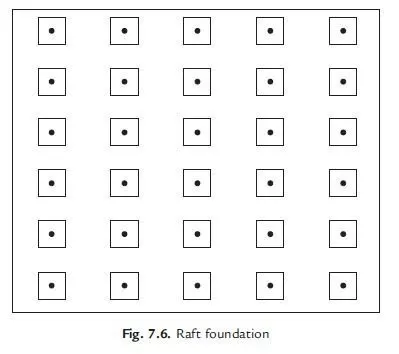

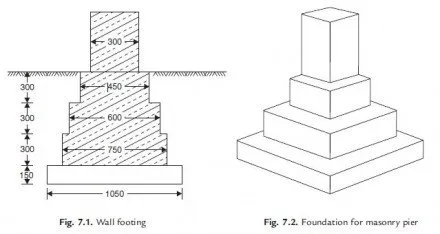

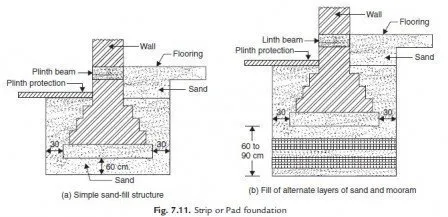
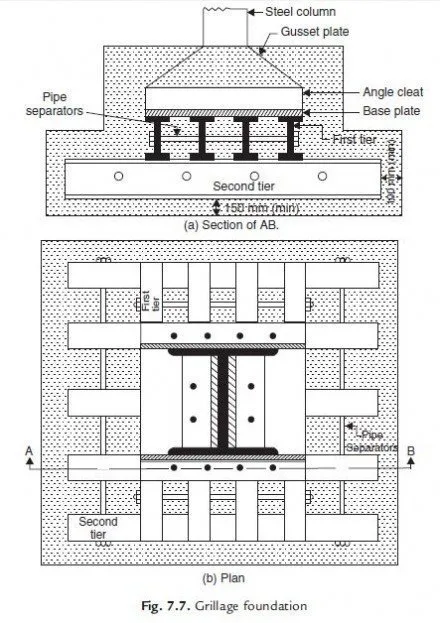

thank you for this knowlege bank. would like more clarity on the design of end column footings that are eccentrically loaded.
COULD YOU PLEASE SEND ME FOOTING CALCULATION FOR RCC FOOTING?
excellent
I expecting more
I will built my resident house 1300 sft 4 th floor (GFL+1st+2nd+3rd+4th). Please give me design Rcc footing size,Colum,Beam design.
Thank you.
SIRAJ.
i want to know the total load of my 4 storey building which is coming on 5ft *5ft square footing.
pls send me that how calculate the footing desing ?
can please provide more clarification on the calculation that governs the choice of the types of the footings?
please give sir design rcc footing column design & beam design sir